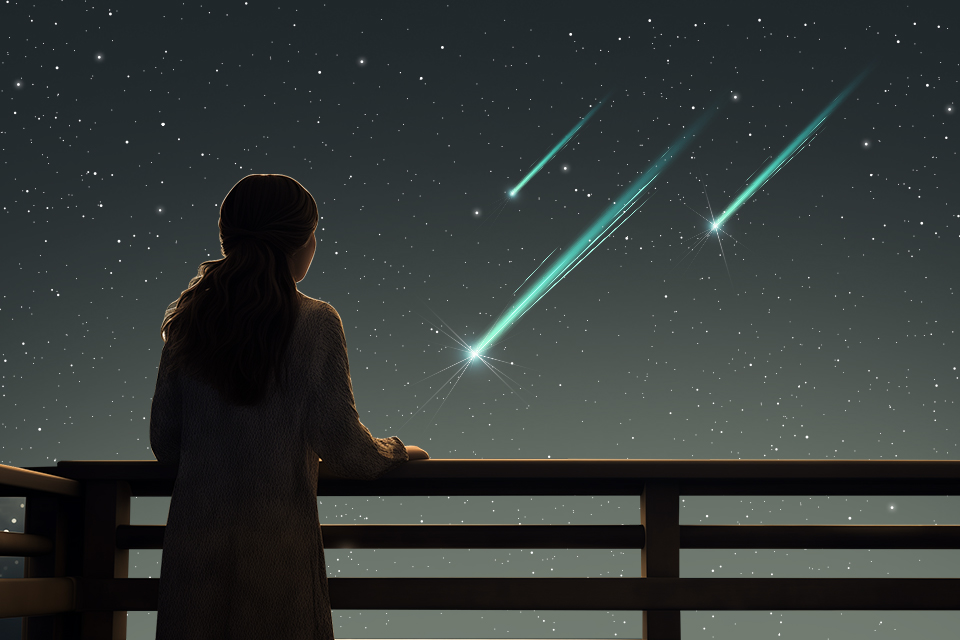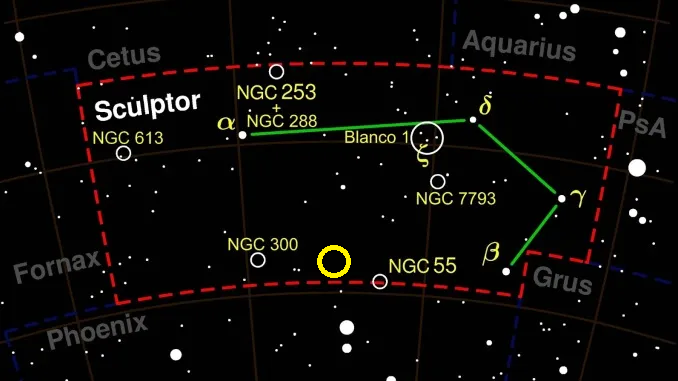Astronomical predictions related to comets and the meteors they produce are a rather thankless task. We still know too little about these celestial bodies. It is all the more rewarding when such a prediction finally comes true. This is exactly what happened on 12 December. Observers in New Zealand and Japan were able to register the first signs of a new meteor shower, tentatively named the λ-Sculptorids. In fact, they were lucky enough to witness its birth.
Preliminary information about the stream was obtained through radar observations conducted by Hirofumi Sugimoto’s group. Astronomers summed up data from 41 radar stations, which indicated an increase in the number of slow meteors between 11 and 15 hours Kyiv time (9 a.m. and 1 p.m. UT). After that, the activity of the λ-Sculptorids began to drop sharply, so even if there had been clear skies over Ukraine on 12 December, we would hardly have seen anything — even in the east of the country, where darkness fell only at around 5pm.

Meanwhile, New Zealand observers reported registering 8 meteors from the same radiant during the same time period. Its approximate coordinates were direct ascension 0ʰ30ᵐ, declination -39°, which is very close to the predicted values for the meteor swarm associated with Comet Wirtanen (46P/Wirtanen). This means that at the latitude of Kyiv, even taking into account atmospheric refraction, it rises above the horizon by only one degree. The southern regions of Ukraine have an advantage in this regard.
Based on radar and visual observations, the total number of meteors at the peak could have reached 120 per hour, but, firstly, the maximum was very short, which is typical for “young” meteors, and secondly, most of them were not visible to the naked eye. Again, according to predictions, the speed of the λ-Sculptorid meteoric particles entering the Earth’s atmosphere should be relatively low (about 15 km/s), and thus they do not heat up as much as particles of other streams and do not create noticeable bright trails.

For some time (perhaps several decades), the λ-Sculptorids will be observed only when the Earth passes through the densest part of the swarm, i.e. once every 5-6 years. But then the particles forming the stream will be distributed along the comet’s orbit, and it will become annual with minor fluctuations in intensity. By the way, the orbits of the meteors observed on 12 December 2023 are quite different from the orbit of Comet Wirtanen. This means that after 1974, when the meteoric particles were ejected into space during the approach of the “tailed star” to the Sun, they were subjected to a more powerful gravitational influence from the large planets than the “parent” body, being able to fly closer to the Earth and enter its atmosphere.
The day after the maximum of the λ-Sculptorids, the Earth passed through the densest part of the powerful Geminid meteor shower.
Based on the materials: www.seti.org

